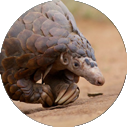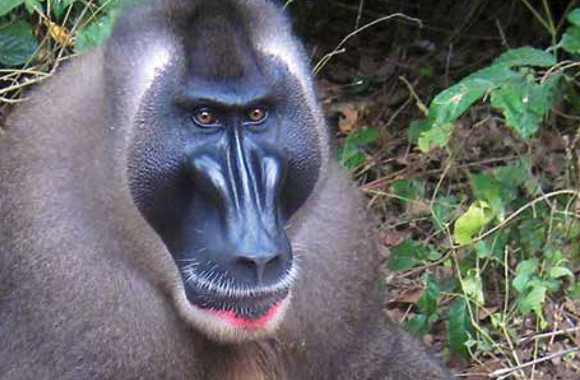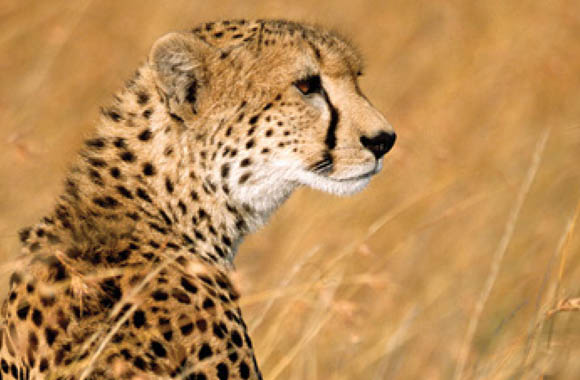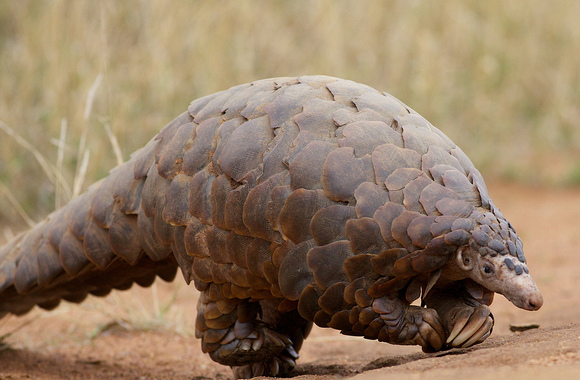About
Pangolins, also known as scaly anteaters, are the most heavily illegally-traded mammals in the world. There are eight species of pangolins: four in Africa and four in Asia. These shy, gentle, slow-moving, nocturnal mammals are covered in scales made of keratin (the same protein that forms human hair and fingernails).
Unfortunately, tens of thousands of these harmless animals are captured and traded each year, and they are being poached to near extinction. Pangolins are killed for their meat, as well as for their scales, blood, and fetuses, which are used in traditional Chinese and African medicine. In the past decade, more than one million pangolins were reportedly illegally caught in the wild. In fact, it is estimated that at least one pangolin is killed every hour in Asia. Experts indicate that the two Critically Endangered pangolin species, the Chinese pangolin and the Sunda pangolin, could go extinct within 10 years if current trends continue.
“The humble pangolin, a scaly anteater, is one of the most endangered animals on the planet because of poaching. The pangolin runs the risk of becoming extinct before most people have even heard of them.”
Prince William
Pangolins have an extremely important ecological role of regulating insect populations. One single pangolin can consume around 70 million ants and termites per year. If pangolins go extinct, there would be a cascading impact on the environment.
“Pangolins save us millions of dollars a year in pest destruction. These shy creatures provide a vital service and we cannot afford to overlook their ecological role as natural controllers of termites and ants.”
Simon Stuart, chair of the International Union for Conservation of Nature (IUCN) Species Survival Commission.

Pangolins
Status
IUCN Red List classification:
Chinese pangolin – Critically Endangered
Sunda pangolin – Critically Endangered
Indian pangolin – Endangered
Philippine pangolin – Endangered
Giant ground pangolin – Vulnerable
African white-bellied pangolin – Vulnerable
Cape/Temminck’s ground pangolin – Vulnerable
Black-bellied pangolin – Vulnerable
CITES Status: At the 17th Conference of the Parties (CoP17) of the Convention on International Trade in Endangered Species of Wild Fauna and Flora (CITES) in September 2016, Born Free USA helped to secure the adoption of a prohibition of commercial trade in all eight pangolin species; all eight were uplisted from Appendix II to Appendix I. These listings went into effect on January 2, 2017, banning the commercial trade of all eight pangolin species and their parts.
Endangered Species Act Status:
Cape/Temnick’s ground pangolin – Endangered
All other species, no data available.
Population
Estimated number remaining in the wild: Unknown
Population decline of pangolins: Very little is known about the population numbers of pangolins. Lack of sufficient information regarding both population status and the illegal trade in pangolins are serious challenges to addressing their conservation. As with other species traded illegally, seizures of pangolin parts and bodies are thought to be just a small fraction of the actual trade taking place.
What we do know is that, according to the International Union for Conservation of Nature (IUCN) Red List of Threatened Species, all eight species of pangolins have a decreasing population trend: a worrying sign for the future.
The Chinese and the Sunda pangolin species are currently listed as Critically Endangered due to high levels of hunting and a dramatic decrease in populations over the past 15 years. Sadly, this decline is expected to continue at a rate of 50% over the next 15 years. As these species decline, demand has started to impact the other species of pangolins; therefore, they are all threatened with extinction in the near future.
Location
Pangolins inhabit a wide range of environments across Asia and Africa, with habitats overlapping in some cases. In Asia, their habitat ranges as far west as Pakistan, and as far north as Nepal and the outskirts of the Himalayan Mountains. In the south, they range as far as the southern tip of Indonesia.
The African white-bellied pangolin is found throughout central and western Africa, overlapping with that of the black-bellied pangolin, with the former species preferring more forested areas. The Cape pangolin is the only species found in southern Africa.
Pangolins occupy many habitats; they can be found in sub-tropical and tropical forests, thick bush, grasslands, dry woodlands, open savannah regions, and even in agricultural areas, like rubber plantations.
Size
The black-bellied or long-tailed African pangolin is the smallest of the species, usually weighing around 4.5-6.5 pounds. The giant ground pangolin, also an African species, is the largest of the pangolins and usually weighs up to 77 pounds. The Asian species can be differentiated from their African counterparts by the presence of hair found between their scales.
Fun Fact
A pangolins tongue attaches near its pelvis and last set of ribs, and is often longer than their head and body combined.
Pangolins can emit a strong, noxious-smelling chemical from glands near the anus, similar to the spray of a skunk.


